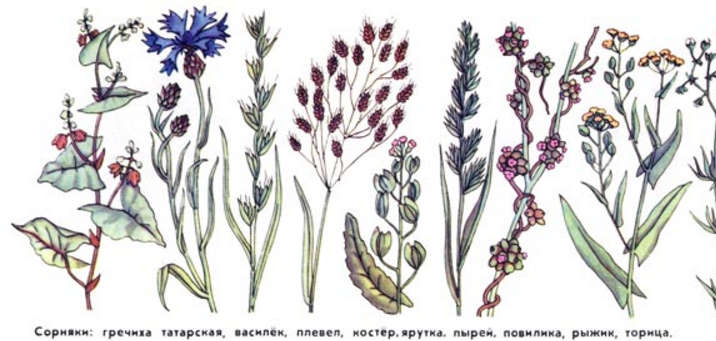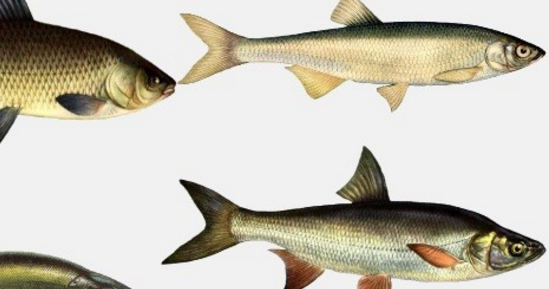Pattern Recognition and Scientific Knowledge
Recent advances in pattern recognition are impressive. Suffice it to recall the results of competitions based on ImageNet. Immediately the question arises, what next? How can we use the achievements achieved?
Something important began when Fei-Fei launched the ImageNet project. Looks like a revolution.
On a subconscious level, I did not let go of one small detail, often mentioned in the discussion about ImageNet competitions. Namely, how accurately neural networks recognize dog breeds. There is something in it that resonates with my neural network. And finally, I also understood what many of you understood long ago. Now I will try to formulate what I understood.
Dog breeds are a fairly narrow, well-researched and very specialized area of our knowledge. To understand the rocks, one must see and remember very, very many specific details. You need to know a lot of information related to breeds, for example, the history of breeds, methods of crossing, the basics of genetics. It is necessary to study a lot of books and constantly monitor new information in this area. Moreover, the appearance of the dog, if we can say its image is crucial for this field of science. Okay, I agree, breeding breeds can be attributed to science with great stretch. Let's better say - "is crucial for this area of knowledge."
')
I recently worked on a system to recognize cars and ships. Using ready-made models that shone in the ImageNet competition, I did not get good results. Obviously, in the ImageNet database, the photos of the ships were significantly smaller than the photos of dogs.
Where can I find photos of ships? Are these photos collected in any databases or registries? Maybe collected, but I could not find them. Another small question fell into my neural network and did not let me sleep.
A couple of days ago, I again came across a popular image base for beginners, the base of iris flowers. Something clicked in the brain and began to fit into the model.
Classification is one of the oldest scientific methods. Immediately recalls Carl Linnaeus with its unified classification system.

The image of the object in these systems is one of the necessary and most important parts of the classification. This is, in essence, a part of knowledge, a representation of knowledge.
What image bases are needed for scientists, engineers, specialists on a daily basis? Let's try to choose at random:





And so on and so forth. As soon as you try to dig, it turns out that literally everywhere we deal with images and literally everywhere we make decisions based on images.
Images of objects are used almost everywhere. It is clear that the work on object recognition has accelerated and improved if we could use recognition systems everywhere and always , instead of manually searching for objects in a pile of books or inviting experts.
There are images. But they are scattered in books and collections. They are not presented in a format that is convenient for automatic processing. And they are few. They are clearly not enough to train a good recognition system.
It's time to introduce you to my model. I am ashamed that for so long everyone has come to me and so clear things. I understand that there is nothing new in this model. But composing this text helped me formulate the problem. Therefore, I took the liberty to give this text to you for discussion.
Any field of science and engineering dealing with visible objects will gain obvious advantages by creating a database of images (or bases).
Any field of science and engineering dealing with visible objects will gain obvious advantages by creating their own image recognition systems .
It is clear that ready-made specialized recognition systems need to learn how to embed, combine.
And maybe it makes sense to make a ready-made system, a library for creating image bases. To make it convenient, for example, to import images, mark them. But maybe we can get by with something simpler, like Amazon Mechanical Turk ?
My last project would have been simplified if I had access not only to ImageNet models, but also to ready-made models for recognizing ships, boats, kayaks, seaplanes, trucks, cars, bicycles. If all these models could be easily combined.
Generally speaking, the creation of specialized recognition systems would help to formalize knowledge regarding the visible side of entities. Narrowly specialized knowledge can be distributed and used quickly, cheaply and efficiently. Expert assessments will be available using a smartphone with a camera.
Something important began when Fei-Fei launched the ImageNet project. Looks like a revolution.
On a subconscious level, I did not let go of one small detail, often mentioned in the discussion about ImageNet competitions. Namely, how accurately neural networks recognize dog breeds. There is something in it that resonates with my neural network. And finally, I also understood what many of you understood long ago. Now I will try to formulate what I understood.
Dog breeds are a fairly narrow, well-researched and very specialized area of our knowledge. To understand the rocks, one must see and remember very, very many specific details. You need to know a lot of information related to breeds, for example, the history of breeds, methods of crossing, the basics of genetics. It is necessary to study a lot of books and constantly monitor new information in this area. Moreover, the appearance of the dog, if we can say its image is crucial for this field of science. Okay, I agree, breeding breeds can be attributed to science with great stretch. Let's better say - "is crucial for this area of knowledge."
')
I recently worked on a system to recognize cars and ships. Using ready-made models that shone in the ImageNet competition, I did not get good results. Obviously, in the ImageNet database, the photos of the ships were significantly smaller than the photos of dogs.
Where can I find photos of ships? Are these photos collected in any databases or registries? Maybe collected, but I could not find them. Another small question fell into my neural network and did not let me sleep.
A couple of days ago, I again came across a popular image base for beginners, the base of iris flowers. Something clicked in the brain and began to fit into the model.
Available knowledge and image databases
Classification is one of the oldest scientific methods. Immediately recalls Carl Linnaeus with its unified classification system.

The image of the object in these systems is one of the necessary and most important parts of the classification. This is, in essence, a part of knowledge, a representation of knowledge.
What image bases are needed for scientists, engineers, specialists on a daily basis? Let's try to choose at random:
Agronomy, plants

Medicine, bacteria

Fisheries, fish

Geology, ores

Biology, insects

And so on and so forth. As soon as you try to dig, it turns out that literally everywhere we deal with images and literally everywhere we make decisions based on images.
The need for image databases
Images of objects are used almost everywhere. It is clear that the work on object recognition has accelerated and improved if we could use recognition systems everywhere and always , instead of manually searching for objects in a pile of books or inviting experts.
There are images. But they are scattered in books and collections. They are not presented in a format that is convenient for automatic processing. And they are few. They are clearly not enough to train a good recognition system.
Model
It's time to introduce you to my model. I am ashamed that for so long everyone has come to me and so clear things. I understand that there is nothing new in this model. But composing this text helped me formulate the problem. Therefore, I took the liberty to give this text to you for discussion.
Specialized image database
Any field of science and engineering dealing with visible objects will gain obvious advantages by creating a database of images (or bases).
Specialized image recognition models
Any field of science and engineering dealing with visible objects will gain obvious advantages by creating their own image recognition systems .
Combination of specialized recognition systems
It is clear that ready-made specialized recognition systems need to learn how to embed, combine.
Ready system for creating image bases
And maybe it makes sense to make a ready-made system, a library for creating image bases. To make it convenient, for example, to import images, mark them. But maybe we can get by with something simpler, like Amazon Mechanical Turk ?
Dream
My last project would have been simplified if I had access not only to ImageNet models, but also to ready-made models for recognizing ships, boats, kayaks, seaplanes, trucks, cars, bicycles. If all these models could be easily combined.
Generally speaking, the creation of specialized recognition systems would help to formalize knowledge regarding the visible side of entities. Narrowly specialized knowledge can be distributed and used quickly, cheaply and efficiently. Expert assessments will be available using a smartphone with a camera.
Source: https://habr.com/ru/post/323030/
All Articles